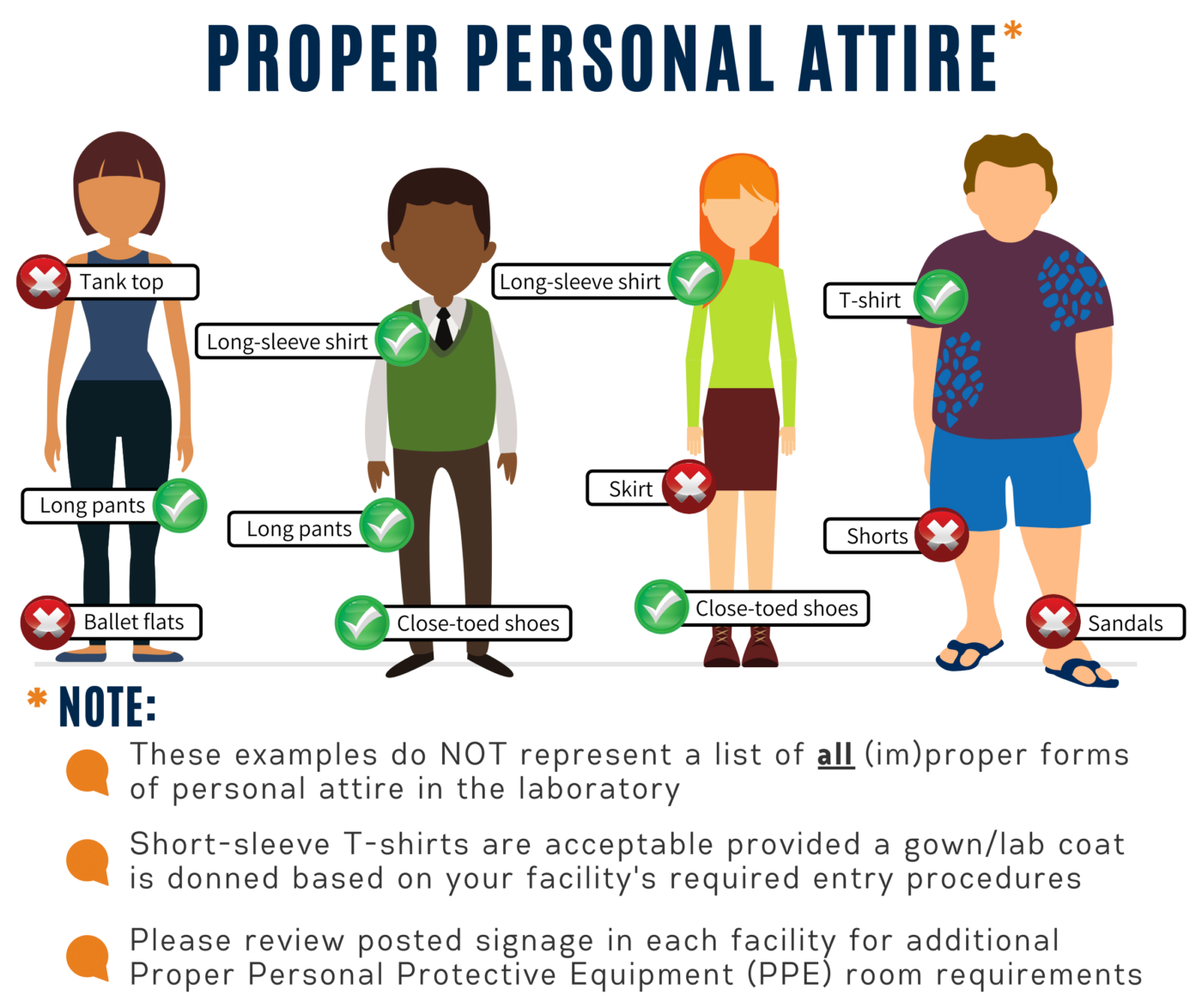
With the arrival of warm weather and many individuals returning to campus, now is the perfect time to review the basics of proper personal attire in the laboratory with your staff (including students).
REGARDLESS of outdoor weather conditions, personal attire worn in the laboratory and/or animal care facility should ALWAYS provide full coverage of the legs, feet, and torso.
Specifically:
- Shirts or tops must cover the upper torso. Short-sleeve T-shirts are acceptable provided that a gown/lab coat is donned based on your facility’s required entry procedures;
- Shorts, skirts, or pants/capris that leave any part of the leg exposed are NOT permitted;
- Shoes must completely cover the feet. Shoes with holes (including sandals, ballet flats, open toe, open weave) are NOT allowed;
- Pantyhose and/or nylons are also NOT recommended due to an increased risk of injury from chemicals or heat melting the nylon to the skin.
Lab coats are also an essential component of proper laboratory attire and must be worn when handling chemical, biological, or radiological materials. This requirement also applies to work at a lab bench or with equipment where such materials are handled (even in warmer weather) in order to provide maximum protection to the wearer.
Note that lab coats must NOT be worn in animal rooms.
Coats must be maintained in good condition and should be laundered when they become dirty as a result of spillage or other contamination. Laundering must be done by a commercial company (i.e., Cintas, Sohn Linen). Do NOT launder lab coats at home or via a laundry service that is not equipped (e.g., a non-professional service) to handle lab coats.
More Information
A complete list of proper laboratory attire is available in the U-M’s Chemical Hygiene Plan.
Additional information about the specific level(s) of Personal Protective Equipment (PPE) required for working with different animal species and associated hazards can be found on the Department of Environment, Health & Safety (EHS) website and in the EHS Animal Handler PPE Chart.
If you have additional questions or concerns about safety and/or environmental health, please contact EHS at [email protected].
Remember, these guidelines are in place to ensure a safe and secure environment for research personnel and the animals entrusted to our care.